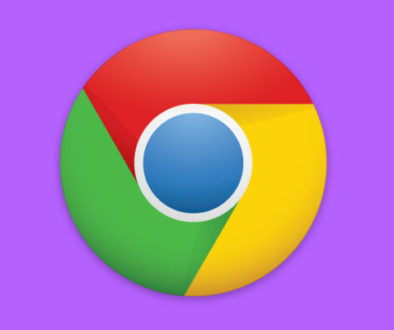‘If your enemy has all the power, you may as well sleep with them’: Why subscription publishers can’t quit Facebook ads
While some big brands might question Facebook’s commitment to stop funding hate and the sales volume it drives, for a few groups of marketers— like direct-to-consumer brands and subscription publishers — it’s the workhorse to which their success is hitched. Outside of publishers’ own platforms, Facebook is a top […]

While some big brands might question Facebook’s commitment to stop funding hate and the sales volume it drives, for a few groups of marketers— like direct-to-consumer brands and subscription publishers — it’s the workhorse to which their success is hitched.
Outside of publishers’ own platforms, Facebook is a top driver of subscriptions because of its unrivaled scale, ease of use and precision targeting making it ideal for direct response-driven advertising. During the economic and ad downturn, it’s only become more important in the hunt for revenue.
It’s clear to see why publishers advertise on Facebook, even if they say they don’t like it very much. Cost-per-customer acquisition for the publishers that consultancy The Sterling Woods Group works with is usually between 50% and 100% of the cost of the year-one subscription price, according to CEO Rob Ristagno. Over the past few months, with lower supply and higher demand, some publishers have been able to halve their cost per customer acquisition on Facebook — but it’s creeping back up to normal levels according to Ristagno and ad buyers.
“Spending on Facebook is a critical part of the mix, but there are a few caveats,” he said. For example, it’s pricey and publishers have to be willing to invest real money for a short period for the algorithms to get to know your business. “Don’t expect to get overnight success or throw $1,000 at a ‘test’ and expect it to work,” he said.
News, and particularly subscription publishers, have had a characteristically fraught relationship with Facebook. “I believe in the intent of Google to support the news industry, I don’t believe in the intent of Facebook to support it at all,” said one subscription publishing executive. While Facebook’s official route for driving subscribers has yielded moderate results, it is a good vehicle for lead generation, like targeting specific cohorts with ads offering subscription deals where readers need to enter an email address to get the offer, then retarget to get the full conversion.
“Some publishers are really happy and have seen tremendous success,” said a third publishing executive. “It’s seen as efficient, but there have been concerns around access to meaningful data, whether they can attract the right target audience. It’s one of many tools that publishers could use. It depends on the context.”
Magazine group Condé Nast was one subscription publisher that amped up Facebook ad spend recently. In April, subscriptions across Condé Nast’s portfolio increased by 100% with 50% of that coming from paid efforts like Facebook. It has spent over $19.5 million on Facebook so far this year, the 23rd biggest U.S. spender, according to estimates from Pathmatics. Condé Nast did not respond to a request for comment.
The New York Times spent over $24.5 million on Facebook ads so far this year, the 18th biggest spender in the U.S. The Times declined to comment on the record for this article, but said that Pathmatics overestimated its Facebook spend by more than double and that it is on track to spend less with the social platform over the course of the rest of the year.
The New York Times and CNN among others have used Pathmatics data — which uses an opt-in panel of U.S. mobile Facebook users and CPM estimates based on Facebook’s reported earnings—in their reporting on the Facebook ad boycott.
The Wall Street Journal spent $22.3 million on Facebook so far this year, the 20th biggest spender, according to Pathmatics. The publisher declined to comment for this article but said that the estimate was inaccurate. There are other media brands in the top 100 spenders, like BuzzFeed, CBS and Spotify.
There will always be a place for direct response advertising, but it’s about finding a balance and challenging the accepted logic that Facebook is objectively always on the media plan because that’s where people are.
“Unless that balance is readdressed, publishers are stuck in an endless cycle of losing readers to Facebook and paying Facebook,” said Amy Williams, founder of Good-Loop, which offers an alternative platform that uses ad money to fund pro-social causes. “I don’t blame the publishers, if your enemy has all the power, you may as well sleep with them. But we can try and break out of this vicious circle where Facebook is always on the plan.”
There are enough skeptics who believe the FAcebook ad boycott — helpful for scoring “woke” points when marketing budgets need to be trimmed anyway — will go the same way as previous ones. Mark Zuckerberg expects the brands back soon but has conceded to a brand safety audit by the Media Ratings Council. The top 100 Facebook ad spenders in the U.S. still only make up 6% of its ad revenue, per Pathmatics, the bulk coming from legions of small and medium businesses that need Facebook’s local precision.
There are glimmers of change. The number of advertisers joining the boycott are climbing and advertisers are looking for alternatives. IPG Mediabrands launched a framework for buying ‘responsible’ media. Good-Loop has raised over $1 million for a range of causes since it started in October 2016. This June, it saw 1000% growth year-on-year. The number of inbound proactive leads has doubled since the coronavirus outbreak, said Williams.
But unless publishers want to cut out a chunk of the most active parts of their funnel, there isn’t a more viable alternative that’s as effective for reach and targeting — than Facebook.




